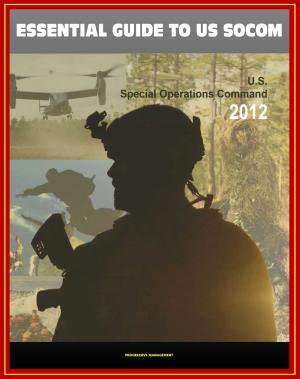Antarctica: Intellectual Armistice Since 1961 – Protection of American Interests Under Treaty, History, Policies and Programs, Expanding Antarctic Infrastructure, Oil and Gas Deposits, Climate Change
Nonfiction, History, Polar Regions, Social & Cultural Studies, Political Science, Government, Public Policy| Author: | Progressive Management | ISBN: | 9781370215997 |
| Publisher: | Progressive Management | Publication: | February 28, 2017 |
| Imprint: | Smashwords Edition | Language: | English |
| Author: | Progressive Management |
| ISBN: | 9781370215997 |
| Publisher: | Progressive Management |
| Publication: | February 28, 2017 |
| Imprint: | Smashwords Edition |
| Language: | English |
This excellent report has been professionally converted for accurate flowing-text e-book format reproduction. Antarctica is a 5.4 million square mile land mass, larger than the United States and Mexico combined. Covered by an ice sheet 7,000 feet thick, it constitutes 90 percent of the world's ice and 70 percent of the world's fresh water. The United States, in conjunction with 11 other nations, drafted and signed the Antarctic Treaty of 1961 to prevent the territory from becoming an object of international discord. Although Antarctica has been free of conflict for the last sixty years, the operational environment has changed. Global population growth, natural resource scarcity, and climate change are altering Antarctica's operational environment, requiring the Department of Defense (DoD), along with inter-agency and multinational partners, to develop a comprehensive Antarctic strategy that complements the Antarctica Treaty of 1961 and protects US national interests in the near term and beyond. Antarctic pursuits may be costly and risks upsetting the international balance of power, but where there is risk, there is also opportunity.
Although Antarctica has been free of conflict for the last 60 years, the operational environment has changed. Discoveries of mineral deposits, oil and natural gas, and commercial fisheries of krill have revealed the continent's economic potential. Advancements in technology, both terrestrial and maritime, have enhanced the feasibility of harvesting unclaimed resources in Antarctica. In addition, better cold weather equipment, modernized infrastructure, and ice-hardened boats can better sustain enduring operations located deeper within the continent. Ongoing climate change is also altering the location, mass, thickness, and uniformity of various ice sheets, opening previously inaccessible terrain and enabling the harvest of fresh water ice. Although the demands for Antarctic resources have yet to be contested, the need for acquiring and controlling new quantities of natural resources (energy, food, and water) is rising due to meteoric global population growth.
Social, economic, technological, and environmental changes in the operational environment now undermine the polar norms preserved by the Antarctica Treaty. While notions of possessing Antarctica still linger, potential apportionment strategies grow less viable as international policies become more inflexible and entrenched.
This excellent report has been professionally converted for accurate flowing-text e-book format reproduction. Antarctica is a 5.4 million square mile land mass, larger than the United States and Mexico combined. Covered by an ice sheet 7,000 feet thick, it constitutes 90 percent of the world's ice and 70 percent of the world's fresh water. The United States, in conjunction with 11 other nations, drafted and signed the Antarctic Treaty of 1961 to prevent the territory from becoming an object of international discord. Although Antarctica has been free of conflict for the last sixty years, the operational environment has changed. Global population growth, natural resource scarcity, and climate change are altering Antarctica's operational environment, requiring the Department of Defense (DoD), along with inter-agency and multinational partners, to develop a comprehensive Antarctic strategy that complements the Antarctica Treaty of 1961 and protects US national interests in the near term and beyond. Antarctic pursuits may be costly and risks upsetting the international balance of power, but where there is risk, there is also opportunity.
Although Antarctica has been free of conflict for the last 60 years, the operational environment has changed. Discoveries of mineral deposits, oil and natural gas, and commercial fisheries of krill have revealed the continent's economic potential. Advancements in technology, both terrestrial and maritime, have enhanced the feasibility of harvesting unclaimed resources in Antarctica. In addition, better cold weather equipment, modernized infrastructure, and ice-hardened boats can better sustain enduring operations located deeper within the continent. Ongoing climate change is also altering the location, mass, thickness, and uniformity of various ice sheets, opening previously inaccessible terrain and enabling the harvest of fresh water ice. Although the demands for Antarctic resources have yet to be contested, the need for acquiring and controlling new quantities of natural resources (energy, food, and water) is rising due to meteoric global population growth.
Social, economic, technological, and environmental changes in the operational environment now undermine the polar norms preserved by the Antarctica Treaty. While notions of possessing Antarctica still linger, potential apportionment strategies grow less viable as international policies become more inflexible and entrenched.















